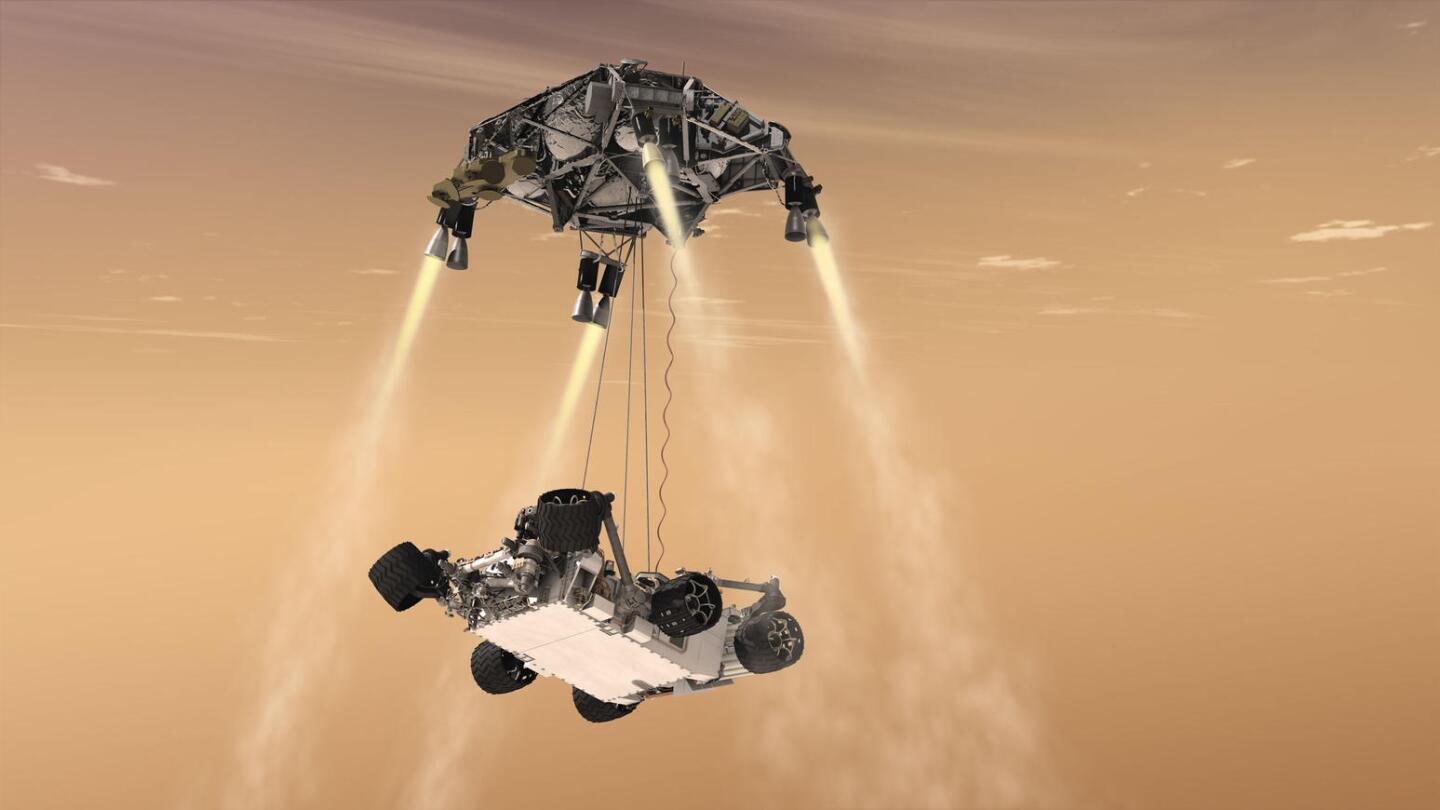A huge moment of truth for NASA's Mars 2020 rover, just as it was for the InSight lander back in November, will be the so-called "seven minutes of terror," the period between entry into the atmosphere and touchdown on the surface of the Red Planet. Here the spacecraft's computers will need to perform thousands of calculations to bring it down safely to the surface through a string of high-stakes maneuvers mission scientists have now begun prepping for with a round of simulations here on home soil.
Scheduled to launch in July next year, the Mars 2020 rover will seek to answer some of the key questions about Mars by focusing its search on signs of habitable conditions in the planet's ancient past. To that end, the rover will be fitted with a drill to collect rock and soil samples and, with a view to future manned missions, instruments to test out new methods of producing oxygen from carbon dioxide in the Mars atmosphere.
Before it can do any of that, however, it must safely navigate the treacherous waters between the edge of space and its landing site in Mars' Jezero Crater. The reason NASA refers to these kinds of entry, descent and landings sequences as the "seven minutes of terror" is because it will be left up to the spacecraft's autonomous control software to slow the craft down and stick the landing, with mission control unable to intervene and only receiving confirmation once the job is done.
The engineering team has now put all the hardware and flight software to the test for the first time in what it calls Systems Test 1, or ST1. Conducted over two weeks in January in the High Bay 1 cleanroom at NASA's Jet Propulsion Laboratory, it saw technicians fire up the spacecraft's electrical systems and run the software through various simulated phases of its journey to Mars.

This included the launch itself, which will take place aboard an Atlas 541 rocket at Cape Canaveral, deep space cruising and then the all-important landing sequence. Throughout the simulations, the team says it nailed two out of two Mars landings, four launches, deep space navigation and a number of trajectory correction maneuvers.
"From the test operations room, you could look out the windows onto the cleanroom floor and clearly see the flight hardware," says Heather Bottom, systems engineer for the Mars 2020 mission. "Nothing was visibly moving, but underneath the outer structure, there were flight computers swapping sides, radios sending and receiving transmissions, fuel valves moving in and out, subsystems being energized and later turned off, and electrical signals being sent to nonexistent pyrotechnic devices. There was a lot going on in there."
All in all, the team describes this first evaluation of the flight hardware and software as a "thorough success," but also revealed a few things that could be improved upon. It is planning further simulations ahead of the launch date on July 17, 2019, including testing how the rover withstands the frigid temperatures it will be exposed to on the surface of Mars.
"One of the future scenario tests will place the rover inside a thermal chamber and simulate being on the surface," says Bottom. "It will step through mission critical activities at some very low Mars surface temperatures. Both literally and figuratively it will be a very cool test."
Source: NASA







